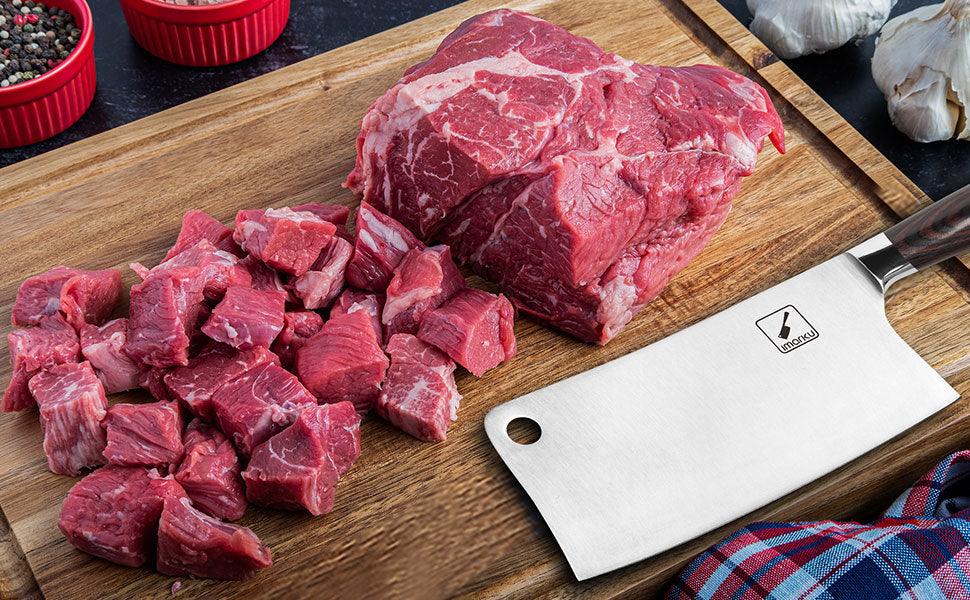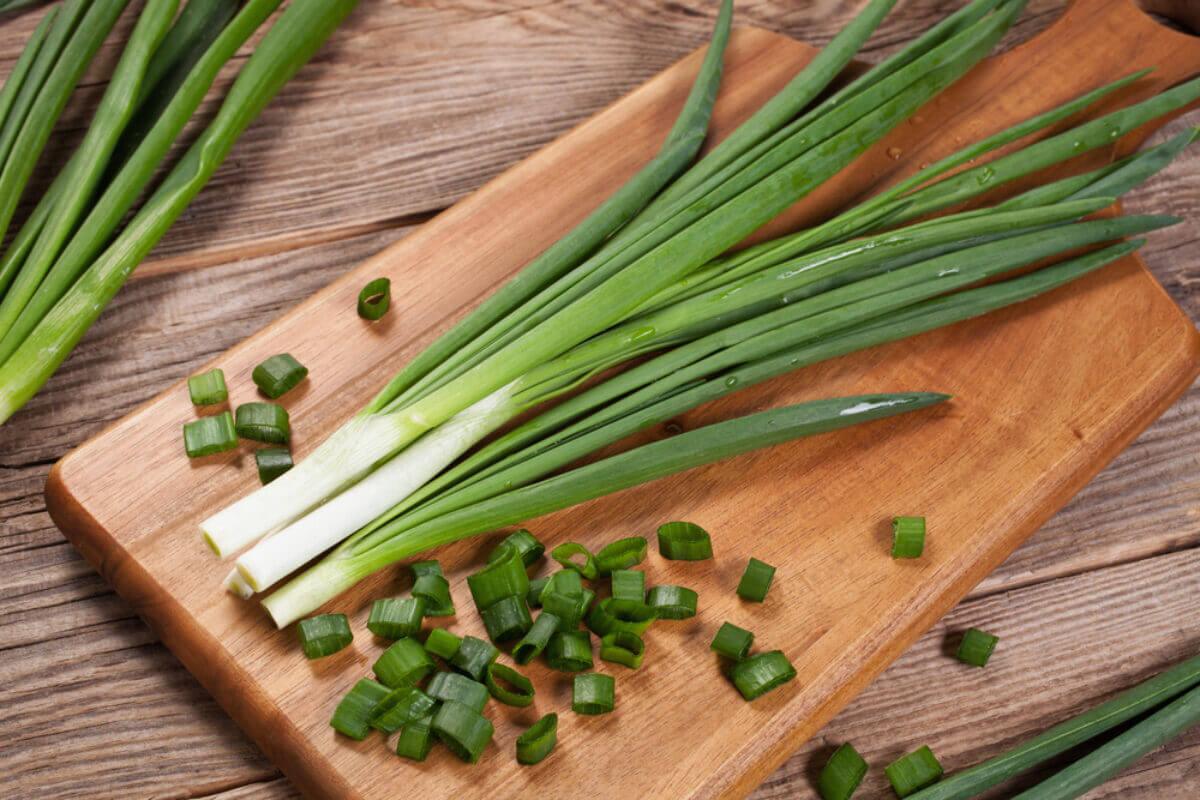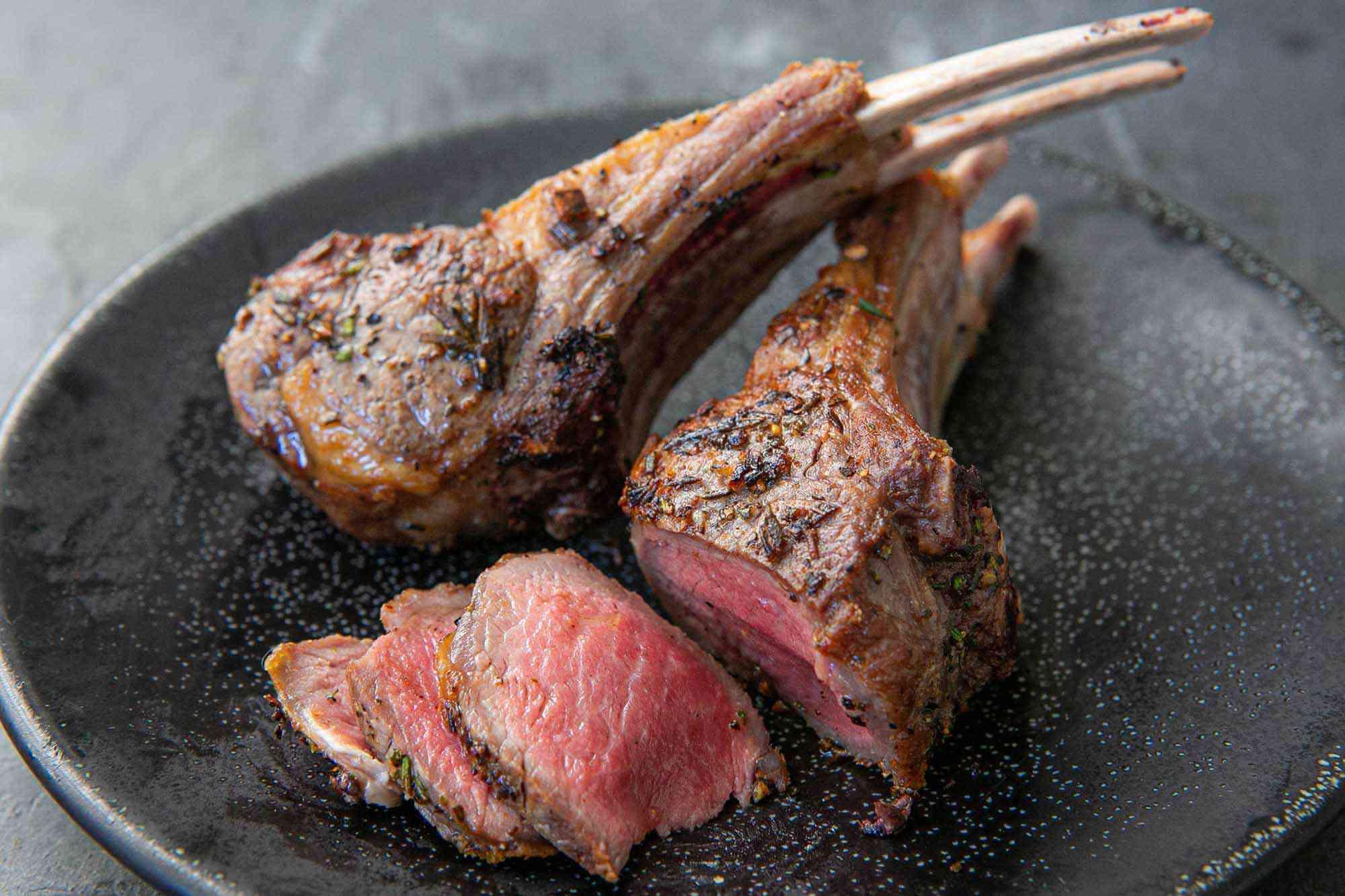TABLE OF CONTENTS
If you are a meat lover like me, you must know how vital having the right kitchen equipment is. Pots and pans may come and go, but one thing that always stays with you, your kitchen partner, is your knife set.
Using the appropriate knife does more than making cutting meat easier – it also helps improve the texture and quality of your protein. Not to mention it's also safer and faster. You'll struggle to cut through a single chunk of meat without a decent butcher's knife and cleaver.
I think I've made enough points to help you understand how important owning a meat knife is. So, in this post, we will provide you with the ultimate guide to owning a meat knife in 2025. We will also discuss the different types of meat knives and share our list of the best meat knives. So, let's get started!

What Is A Meat Knife?
As the name hints, a meat knife is a unique kitchen tool used to tackle protein. Their primary function is to break down tough muscle fibers in meat by carving, chopping, deboning, and disjointing it.
Also known as butcher knives, meat knives cut through challenging pieces of chicken, beef, or lamb without breaking or pulling them apart. Meat knives come in various shapes and sizes. There are rigid, curved, flexible, and straight designs available in the market, making them perfect for people demanding precise cuts of meat.
A meat knife isn't one-size-fits-all, unlike a regular kitchen knife that can dice, slice, chop, and peel vegetables. This category includes a variety of knives. Some are excellent for slicing meat, while others are excellent for boning, shaving, and carving core.
Different Types of Meat Knives
Whenever someone brings up the topic of butcher knives, many people imagine a cleaver in their minds. However, in reality, meat knives refer to an array of blades. Butcher's knife, carving knife, and cleavers are only a few of the various meat knives you will find in the market. When used together, these blades can chop a beast into meal-sized cuts.
We have listed the various types of meat knives with their functions to give you a better idea of how big the meat knives market is:
Carving Knife
Whether a novice cook or a barbecue expert, a carving knife is a must-have in your kitchen. They have long blades and shorter surface areas than other meat knives, allowing for thinner and more precise slices.
You will find these knives extremely handy in family dinners and barbecue parties. Carving knives are ideal for chopping and carving roasts and deep-fried chicken or turkey. The best part is that these tools are a good substitute for a bread knife; they can effortlessly handle big loaves of bread.
Boning Knife
When it comes to removing bones from meat, there is no better tool than a boning knife. This slim and sharp knife is designed to carefully remove flesh, fat, and cartilage from bones, slicing around crevices and joints to get all the meat off.
Boning knives come in flexible, semi-flexible, and stiff variants, so you can be comfortable separating meat from bones while saving waste. Because of their slim design, boning knives are also excellent for filleting fish.
Breaking Knives
A breaking knife cuts into the carcass with its long, curved blade to break it down. They feature curved edges that offer more traction when slicing through tough skin, cartilage, and small bones.
Before using a butcher knife to make massive cuts or skin the meat, professionals use a breaking knife on their carcass. Breaking knives are not necessary, but you can invest in one if you feel fancy. Furthermore, breaking knives are perfect for removing fat from meat cuts.
Cleavers
Cleavers are among the most extended knives in a chef's cutlery set. A meat cleaver features a wide blade that can be used in the kitchen to help you carve large chunks of meat or chop cartilage.
While a cleaver may appear threatening compared to other butcher knives, it is far lighter in weight and thinner in appearance. Nevertheless, it employs brute force rather than accuracy to cut through bones without shattering them.
Steak Knife
While a novice would come up with a million why a steak knife is an unnecessary piece of equipment, a professional chef would purchase one with their eyes closed. A steak knife is the perfect meat knife for those who don't want to have a bandage on their thumb.
It features tiny serrated blades that retain moisture and flavor in your meat slab while slicing and cutting it neatly.
Chef's Knife
The chef's knife is the first and most versatile knife in any kitchen. The chef's knife is capable of slicing meats and chopping tomatoes. Chef knives feature a broad blade that narrows to a point at the tip. High carbon stainless steel is typically used in chef's knives because it delivers the best edge retention, sharpness, and durability.
Slicing Knife
Slicing knives have long, straight blades and are intended for slicing cooked meats such as smoked hams, roasted turkeys, or sirloin steaks. A long blade distinguishes these knives with a rounded tip.
The thin width of the blade reduces drag and cuts through meat more cleanly. Many meat slicing knives have Granton edges to keep the meat from tearing when cutting.
Butcher's Knife
Butcher knives are often found in butcher shops and restaurants and are used to break down portions of meat or cut fat. They have more weight than a chef's knife and have a slightly curved blade than a straighter, tapered blade on a chef's knife.
There is a considerable difference between the two knives: a chef's knife is generally used for cooked meat and tiny cuts in raw meat, but a butcher's knife is only used for raw meat, notably cutting down more significant portions to smaller ones.
Deba Knife
Deba knives are typically utilized as light- or medium-duty cleavers in sushi bars and Asian restaurants. These knives feature medium-length blades and can be used for various purposes, including making fish cuts, chopping vegetables, and cubing meat.

How To Hold and Cut With a Meat Knife?
Unless you want a bandage on your thumb the first time cutting meat with a butcher knife, you need to learn to use one. Whether you are using a butcher knife or a cleaver, here is a three-step procedure to safely use meat knives:

Step 1: You need to grip the knife before cutting meat. There are three acceptable ways to hold a knife: either put your thumb over the bolster or hold the handle with all your fingers.
The third way to grip a meat knife is by choking up one finger and grabbing the knife. When adopting the third method, tuck your thumb into the other side of the blade and curl up your fingertips, or you might lose a nail.
Step 2: Start by slicing with the heel of your blade. Apply a gentle downwards pressure, pulling the knife towards you. Never cut your meat in a zigzag motion, or you will have a ragged base.
Step 3: If you can't cut the meat in one stroke, lift the knife, place the heel back onto the cut section and repeat step #2.
The Best Meat Knives at Imarku
To save you the difficulty of searching the web for professional-grade meat knives, we have compiled our list of the best meat knives in 2025:
1- Chef's Knife 8"
This Chef's knife is exceptionally lightweight multifunctional kitchen equipment. It has a 0.1-inch thick stainless steel blade and weights 6.9 oz. to wreak havoc in the kitchen. It is made of high-grade stainless steel and is designed to last a long time.
Pros
Ergonomic handle
Corrosion-resistant blade
Lightweight
Perfect for beginners

2- Butchers Breaking Cimitar Knife 10"
The Butchers Breaking Cimitar Knife is ideal for butchers and professional chefs. It has a scalpel-like curved blade that provides minimum cutting resistance. Moreover, it can easily cut meat, pierce cartilage and remove fat.

Pros
Full tang and triple-riveted blade
Rust and corrosion-resistant
Single-action blade
3- Merlot Meat Cleaver 7"
The Merlot Meat Cleaver is a Chinese meat knife ideal for cutting, chopping, slicing meats, bones, and vegetables. The cutting bevel has a shallow angle, giving it an extremely sharp edge. With its 2.5mm blade thickness and 8.8 oz. Weight, the Merlot Meat Cleaver 7" can cut through bones like butter.
Pros
Great balance
Anti-slip handle
17-degree cutting angle
4- Deba Knife 7"
The Imarku Deba Knife 7" is ideal for fish and seafood preparation. It is thick and wide and has razor-sharp blades. Its Pakkawood handle offers a firm, comfortable grip and adds an artistic element to your kitchen.
Pros
Single bevel
Professional grade material
Ergonomically shaped handle
Finger protection design
Lightweight – 9.8oz
5- Slicing Carving Knife 12"
The Slicing Carving 12" Knife features a high-quality, flawless design. It has a hand-polished edge at a 12- 15 degrees angle on each side is sturdy and sharp to get the job done perfectly. Moreover, it has a pakkawood handle that reduces wrist tension while offering a secure and comfortable grip.
Pros
Forged meat knife
Great for slicing meat, vegetables, loaves of bread, and fruits
Non-stick food design
Tips to Care for Meat Knives
Knives are a long-term investment – professional meat knives last a decade, and sometimes even two. Unless you want to purchase a new knife every year, you should follow these tips to care for your meat knives:
Always place your meat on a flat surface so that it doesn't slip. Plastic, wood, or bamboo cutting boards are the best options.
Hone your butcher knife at least twice a year to align the edge of the equipment.
Never wash your meat knives in the dishwasher. Hand wash them in warm soapy water.
Store them on a magnetic stripe or a wooden knife block.
Invest in a whetstone to sharpen your meat knives occasionally.
Conclusion
Nothing beats chopping into a porterhouse steak or a lamb chop and having no resistance from the knife or meat. One of the things that lets you "slice your meat like butter" is an efficient meat knife.






















Leave a comment
All comments are moderated before being published.
This site is protected by hCaptcha and the hCaptcha Privacy Policy and Terms of Service apply.